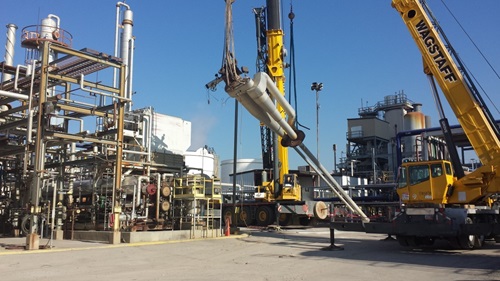21 May 05/21/2019
An Overview of Construction in Oil and Gas: Rigging Up, Pipeline and Plant Construction Work
Construction and repair work go beyond residential and commercial construction. It is easy to think they’re limited to those areas, but they’re not. Of the 500,000 workers in the oil and gas industry, over 30,000 are construction and extraction workers. That’s around 6% of all oil and gas industry employees and the number is rising.
Here is a breakdown of each sub-industry:
| Sub-Industry | # of Construction and Extraction Workers |
|---|---|
| Drilling | 21,760 |
| Pipelines | 8,600 |
| Refineries | 2,600 |
| Total | 32,960 |
Of these 32,960 workers, around 12,000 are specialty trades such as carpenters, electricians, and plumbers.
Oil and gas construction workers perform tasks involving physical labor, whether that entails building well foundations, setting up a rig, welding pipelines, or building refinery infrastructure. They use hand tools, repair drilling equipment, and transport materials to and from sites. Like plant operators, chemical equipment operators, industrial machinery mechanics, and other workers in the oil and gas industry, construction workers face many of the same occupational hazards. These workers contend with dangers to their eyes, hands, arms, feet, and general body daily.

Feet need to be protected from falling objects and natural elements like mud.
Construction work hazards can be found in all four core segments of the oil and gas industry: Upstream, Midstream, Downstream, and Oilfield Equipment/Services. We separately cover each industry below.
Drilling - Upstream Construction

This segment involves getting the oil out of the ground, by which a hole is bored using a drill bit to create a well for oil and natural gas production. After identifying and determining where to drill, the site must be cleared and prepared for excavating. With this comes several hazards related to leveling, excavating, digging, and trenching.
During site preparation, construction workers first clear a road to the site and, if needed, level the specific work site where drilling will occur using bulldozers and/or graders.

Site preparation
Throughout this preparation, they must keep in mind certain safety hazards:
- pedestrian traffic and ground personnel;
- buried pipelines and cables, which could contain electrical, flammable, or toxic materials;
- construction vehicle traffic;
- inclement weather and its impact on the terrain.

Hi-visibility garments are important across all upstream activities, along with protective eyewear and impact protection.
With over 21,000 construction workers in this sub-industry, construction work doesn’t end after excavating. Equipment such as cranes, rig-up trucks, and forklifts are used to assemble and prepare the rig for drilling. This process, called Rigging Up, includes setting the substructure and the rig floor; installing handrails, guardrails, stairs, walkways, and ladders; installing auxiliary equipment like the catwalk and pipe racks; and performing safety inspections to prevent falling, slipping, or tripping during use.

Because there is always the chance of fingers being crushed when setting up the substructure, impact protection should be worn at all times.
Many hazards accompany the work done in the upstream process. Falling objects, hands crushed by equipment, eye irritation from welding light flash, flying projectiles, pinched fingers, and burns from welding are all dangers that workers need to have protection against .
Pipelines - Midstream Construction

This segment involves collecting and transporting crude oil, natural gas, and refined products. A March 2019 Industry Market Research Report indicates oil and gas pipeline construction in the U.S. has grown 2.5% in the last five years. As we highlighted in a recent midstream blog, two pipelines have been built in Texas alone, with another three set for this year.
Across the pipeline industry, over 8,000 construction workers construct and set pipelines that move the fuel from the site to households and businesses. Fractracker breaks down pipeline construction into six stages:
1. Construct staging areas – used to store tanks, sand bags, and equipment
2. Clear cutting the row – clear cut the pipeline and large trees are hauled off
3. Excavating - the trench is dug
4. Pipe transport – pipe sections are laid
5. Obstacles – construction over roads and streams
6. Testing and restoration – pipeline integrity is verified
Once trenches are dug and pipes are transported to the staging areas prepared by construction workers, pipes are laid down beside the trenches. Pipe sections are then bent using pipe bending tools, welded together, sand-blasted, and joints are coated to prevent corrosion.

Welding pipes is a common work activity in this industry. Our Welding Protection page covers the types of welding gloves, glasses, and garments welders should consider wearing.
Much like the upstream segment, hazards at the midstream stage include the local environment (streams and wetlands), land terrain, inclement weather, and equipment. Explosions are a high concern at this stage. With the significant amount of welding taking place, explosions can be caused easily by a spark igniting certain vapors or gases.

MCR Safety manufactures a wide range of FR gear, including Flame-Resistant vests.
Flame-resistant gear is mandatory across all production platforms, drilling rigs, construction barges, and for midstream workers. OSHA requires that oilfield workers wear flame-resistant clothing during several steps of the midstream process. For construction workers, flame-resistant gear should be worn when working with the wells and the product delivery process.
Lastly, construction workers also play a role in on-site storage by moving and placing equipment such as field tank batteries, product bulk terminals, refinery tanks, and holding tanks.
Refinery Plants - Downstream Construction
The downstream segment involves the manufacturing, refining, and selling of natural gas products derived from crude oil.
Although not as plentiful as with pipeline transportation or site preparation and rigging, construction workers are also present in the downstream segment of the oil and gas industry. In 2017, for the first time in 40 years, major oil refineries started planning new construction, indicating growth in the U.S. oil and gas industry. Several existing refineries have recently gone through upgrades and new construction. According to the U.S. Energy Information Administration, in 2012, Motiva upgraded its refinery in Port Arthur, Texas, and in 2015, Valero expanded its Corpus Christi, Texas, refinery again.
During any new construction endeavor, most of the hazards we identify on our construction industry page are a concern for workers. Once the refinery is built, construction activities are never-ending; from new asphalt on refinery roads, to new platform structures needing built, construction workers are critical to downstream success.
As with other oil and gas sectors, countless objects are capable of falling on a worker’s hands and feet during maintenance on refineries. If you are doing any sort of repair and maintenance work, moving materials, operating a valve, servicing a well, or cleaning a spill (just to name a few tasks!), you are going to need steel-toed boots to protect you from water or other liquids, chemical hazards, and dropped impact hazards. You will also need quality impact protection, as shown in the next image.

FF2930 worn while moving pipes.
Refining oil and gas often involves multifaceted equipment, extreme temperatures, and the need for handling hazardous materials. Although construction workers may not directly handle these products, inherent hazards ranging from chemicals to explosions and fires are constant concerns for those working at a refinery.

Like midstream, refinery workers need to wear FR gear at all times. Some Kevlar-lined leather gloves come in handy, too.
Thankfully, refineries are the lowest-ranked oil and gas sub-industry for experiencing injuries. For every 100 employees, there are only .5 incidents, validation that safety managers are hard at work keeping workers safe.
Oilfield Equipment/Services
Oilfield service companies help drilling companies by setting up oil and gas wells. These companies assist in manufacturing, repairing, and maintaining the equipment used in oil extraction, as mentioned in the processes above.
The most dangerous oil and gas sub-industry belongs to the equipment, services, and support industry. For every 100 employees, there are 3 incidents that occur in equipment, services, and support. The closest sub-industry to this one is oil and gas extraction at 1.5 incidents, which still falls into Upstream activities.
Construction workers in the oil and gas industry provide specialized skills. For example, the specialize in machinery, pulling out casings, plugging wells, and dismantling rigs. The construction hazards mentioned in the upstream section are just as relevant in this industry.
MCR Safety Is Dedicated to Construction Workers
We hope the above construction information, as it pertains to the oil and gas industry, provides insight into why safety gear is essential for oil and gas operations. For additional information on all oil and gas sectors, be sure to check out our Oil and Gas Industry pages. Just click the image to learn more.

Do you have questions about construction hazards in the oil and gas industry? Contact us! We’re happy to answer your questions, listen to your suggestions, and help you find the perfect PPE gear for your needs.

Our Construction Industry page is also an excellent resource.
For over 40 years, MCR Safety has proven to be a world-leader in gloves, glasses, and garments. Whether it’s on the shop floor, an oil rig, or a construction site, we are there providing solutions to workplace hazards. We Protect People!

Learn more about MCR Safety by checking out our most recent video. For more information, browse our website, request a catalog, find a distributor, or give us a call at 800-955-6887.
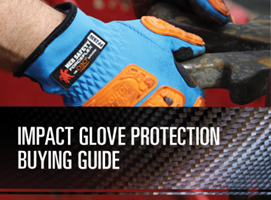
MCR Safety Impact Glove Protection Buying Guide
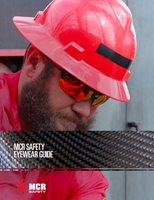
Eyewear Buying Guide
Each year, more than 2.5 million eye injuries occur. Protect yourself by finding the right eye protection for the job.
About the Author
Related Articles
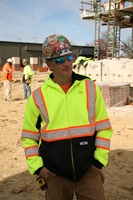
How to Choose the Right Insulated Gear for Concrete Production
MCR Safety is committed to helping concrete manufacturers understand how to choose the right...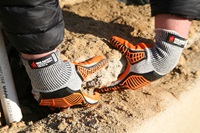
Common Crush and Pinch Point Hazards
A common mistake when purchasing PPE is relying strictly on individual unit cost at the time of...
10 Construction and Concrete Safety Tips
Construction and concrete work is dangerous. Of the 250,000 employees who work in concrete...Latest Articles





